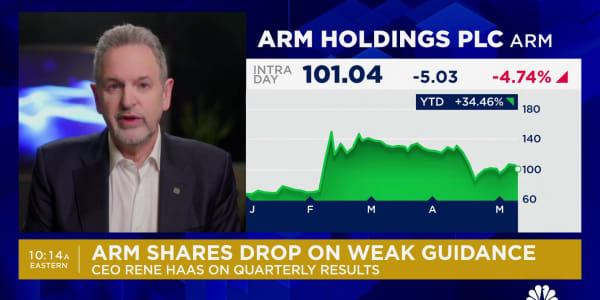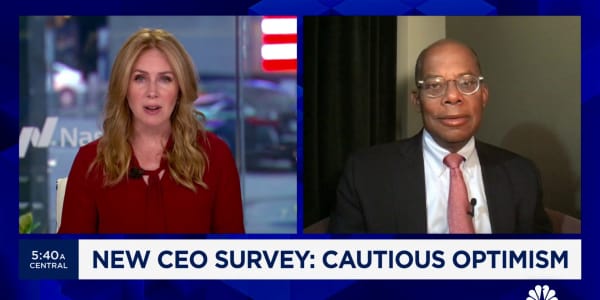The Federal Reserve’s monetary policy makers are widely expected to adjust the central bank’s monetary policy at the conclusion of their two-day meeting later this week. But the most important part of this adjustment may be simply a change in the way the Fed discusses its policies.
This may be surprising to many people. After all, Fed Chairman Ben Bernanke described the “stagnation in the labor market” as a grave concern. Shouldn’t the Fed’s response be more muscular than wordy?
Whatever happened to talking softly and carrying a big stick?
Traditionally, changes in Fed policy mostly came in the form of changes to targeted interest rates or monetary aggregates. The Fed would announce that it was raising or lowering, say, the overnight Fed Funds rate target. In order to hit the target rate, the Fed would buy or sell short-term Treasury bonds in so-called “open market operations.”
More recently, we’ve seen the Fed engage in unconventional monetary operations that have collectively been known as “quantitative easing.”
These have involved the Fed purchasing assets such as mortgage-backed securities and longer-term Treasurys, which have greatly expanded the balance sheet of the central bank.
But the Fed has also long relied on something a bit more subtle. It seeks to influence markets through the language of its announcements, attempting to change market expectations about the direction and duration of interest rates. This is why you see so many Fed-watchers closely scanning Fed minutes, speeches by Fed officials and official statements for hints at what might come next.
Recently, communications strategy has been seen as increasingly important. At least a sizeable group of economists argue that what’s known as the “signaling channel” may be the most important tool in the Fed’s monetary policy arsenal.
To understand why how the Fed talks about its policies might be more important than the particular operations it uses to implement them, it helps to take a step back and look at why monetary policy is viewed as effective in the first place.
Under most standard economic models, economic activity is largely dependent on long-term interest rates. The market arrives at long-term interest rates based on its view of relevant economic risks and expectations of average future short-term rates. For example, the return on a six-month Treasury bill should be around the same as the current return on a three-month bill plus the expected return on a replacement three month bill purchased three months from now.
This implies that one of the ways the Fed can influence economic activity is by changing expectations about the path short-term rates are likely to take. This sort of thinking is one of the reasons that the Fed began communicating very clearly that rates were likely to remain low for an extended period.
A recent paper by economists Jens H.E. Christensen and Glenn D. Rudebusch of the Federal Reserve Bank of San Francisco demonstrated that quantitative easing was more effective in the U.S. than the U.K. The key difference—the Fed was more open about its plans.
The differences between the U.S. and U.K. reactions of the expectations and term premium components of longer-term yields to central bank bond purchases are notable—especially given the similar bond purchase amounts and rationales in the two countries. The contrasting channels of in?uence of the U.S. and U.K. unconventional policy can perhaps be traced to di?erences in policy communication and ?nancial market structure. Speci?cally, with regard to communication, the Federal Reserve was clearly more willing to provide monetary policy forward guidance near the zero bound.
In Jackson Hole, Wyoming last month, Bernanke put the Fed’s communications tools at the center of his speech . The speech was just over 4,500 words and Bernanke’s talk about Fed communications ran from around the 1,900 word mark to the 2,400 word mark. The signaling channel was, literally, central to his speech.
In the communication portion of the speech, Bernanke noted that it may be necessary for the Federal Reserve to begin to communicate that it will abandon some of its usual rules about when to raise interest rates and promise to keep rates lower for longer.
Some of the policy rules informing the forward guidance relate policy interest rates to familiar determinants, such as inflation and the output gap. But a number of considerations also argue for planning to keep rates low for a longer time than implied by policy rules developed during more normal periods. These considerations include the need to take out insurance against the realization of downside risks, which are particularly difficult to manage when rates are close to their effective lower bound; the possibility that, because of various unusual headwinds slowing the recovery, the economy needs more policy support than usual at this stage of the cycle; and the need to compensate for limits to policy accommodation resulting from the lower bound on rates.
In other words, Bernanke is saying that the Fed may have to promise to behave differently than it has in the past—in order to convince markets that rates will remain low even if the economy begins to recover.
Bernanke, at least, seems to believe that the Fed’s words are also sticks. And when the economic situation becomes dire, the word-sticks need to get bigger.
Given this emphasis on communications, it seems very likely that there will be some dramatic changes to the Fed’s statement coming out of the next meeting.
- by CNBC.com senior editor John Carney
Follow John on Twitter . (Market and financial news, adventures in New York City, plus whatever is on his mind.) You can email him at john.carney@nbcuni.com .
We also have two NetNet Twitter feeds. Follow CNBCnetnet for the best of the days posts, including breaking news. Follow NetNetDigest for a feed of every single post each day.
You can also be our friend on Facebook . Or subscribe to John's Facebook page.
We're on Google Plus too! Click here for John's Google+ page .
Questions? Comments? Tips? Email us atNetNet@cnbc.com or send a text message to: 917-740-8477.
Call us at 201-735-4638.






